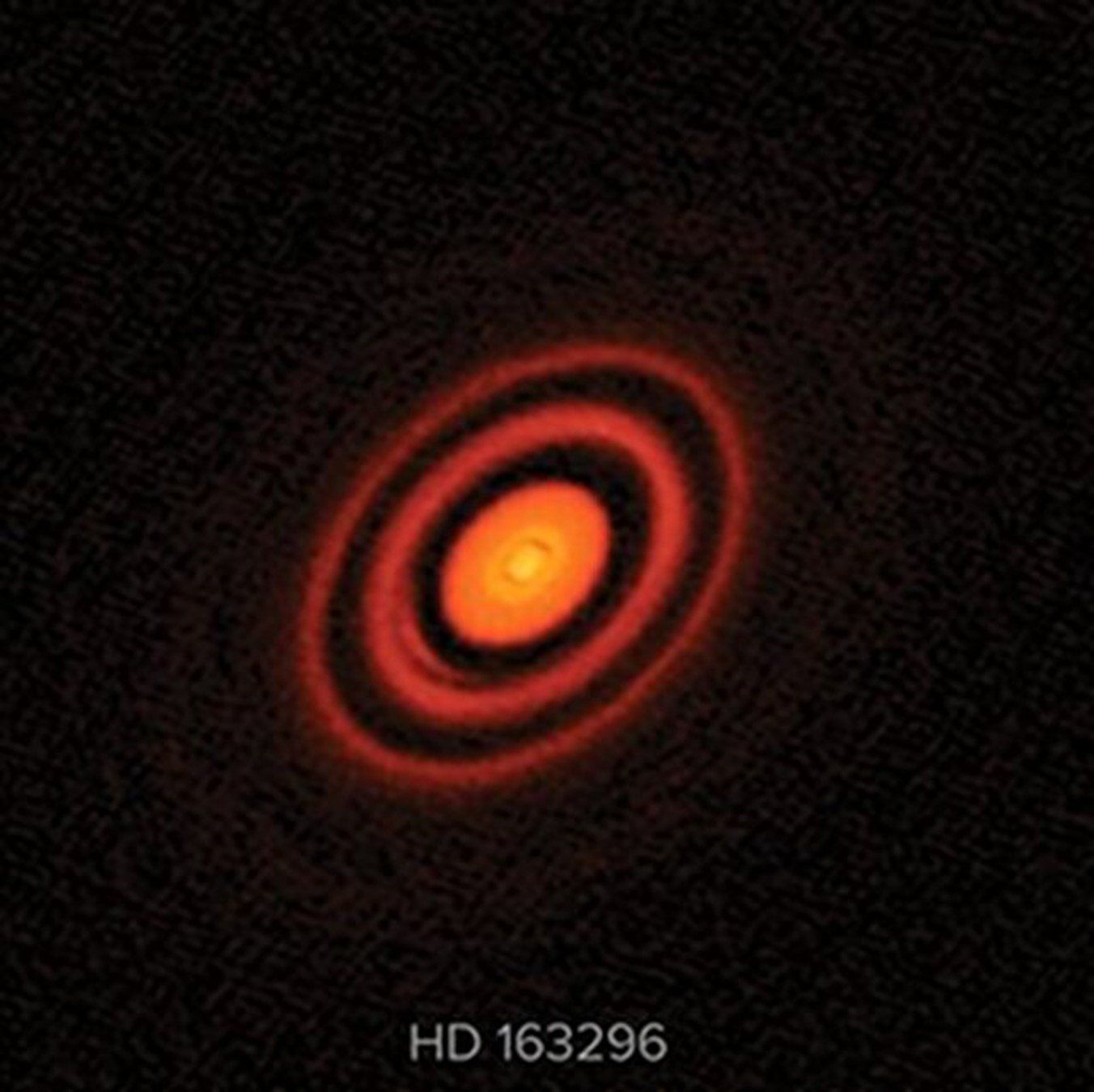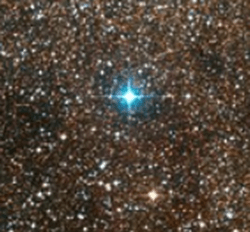Star of the Month
HD 163296
AKA: SAO 185966; HIP 87819
Position: 17 hrs 56 min 21.3 sec -21 degrees 57 min 22 sec
Due south at 23:23 (BST) on 15 July 2022
HD 163296
Image: ESO/Digitized Sky Survey 2
At first sight, HD 163296 appears to be a very boring faint star in the summer constellation of Sagittarius. But thanks to the unparalleled resolving power of the new ALMA radio telescope array high up in the northern Chile Andes on the Chajnantor plateau, this star now is the object of feverish activity by astronomers. It is a magnitude 6.9 star close to M21 and M20 (Trifid Nebula) above the Teapot asterism which is 329 light years away. It is an infant star which is about five million years old of 2.3 solar masses, hence it is an A type star, and has yet to reach star adulthood on the main sequence. On the basis of its spectrum, it is classified as a Herbig Ae star which means it is surrounded by circumstellar material. This material has now been resolved by ALMA into an amazingly clear protoplanetary disc. The image of this disc shows dark circles which are large planets which have already started to clear away material in their orbits. One Jupiter-sized planet is 83 Astronomical Units from the star and the other is 137 AU. By comparison Jupiter is a mere 5.2 AU from the Sun and even Pluto is only 39 AU. The third planet, which is twice the mass of Jupiter, is even further out at 261 AU. Astronomers are using the signal from simple molecules, in particular carbon monoxide, to understand the structure and development of this protoplanetary disc, for example, the impact of molecular winds on its evolution. Icy planetesimals and large comets have been theorised to explain the disc’s behaviour. In millions of years, the disc around HD 163296 will dissipate, leaving a planetary system behind and HD 163296 will become an ordinary hot star. But for now, we can observe its birth pangs in exquisite detail. To find HD 163296 in the sky, you should probably use go-to, but it lies to the north-west of M21 and M20, roughly three times the distance between M21 and M20, which means it is directly below M23.

The protoplanetary disc surrounding HD 163296
Credit: ALMA (ESO/NAOJ/NRAO), S. Dagnello
